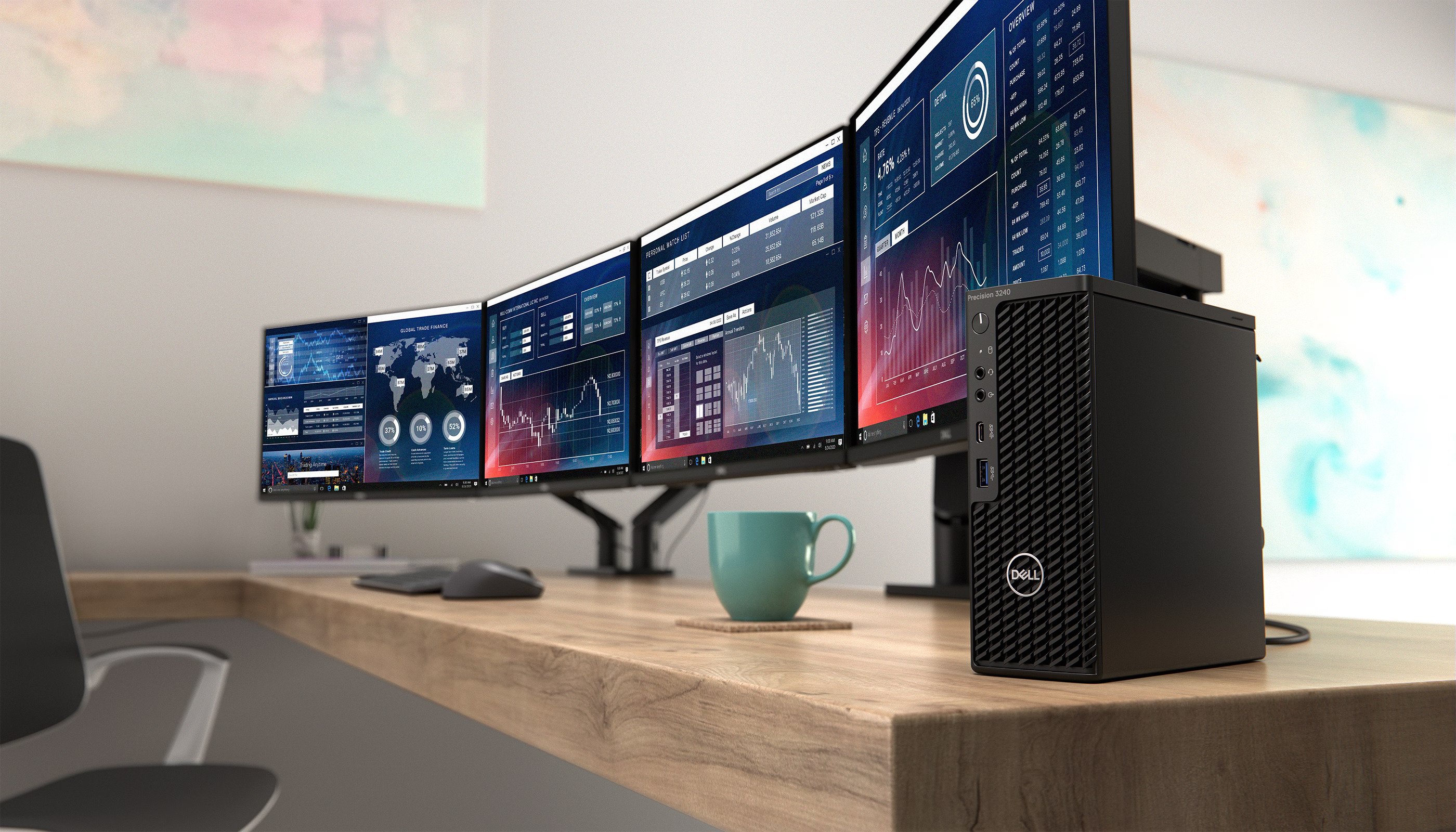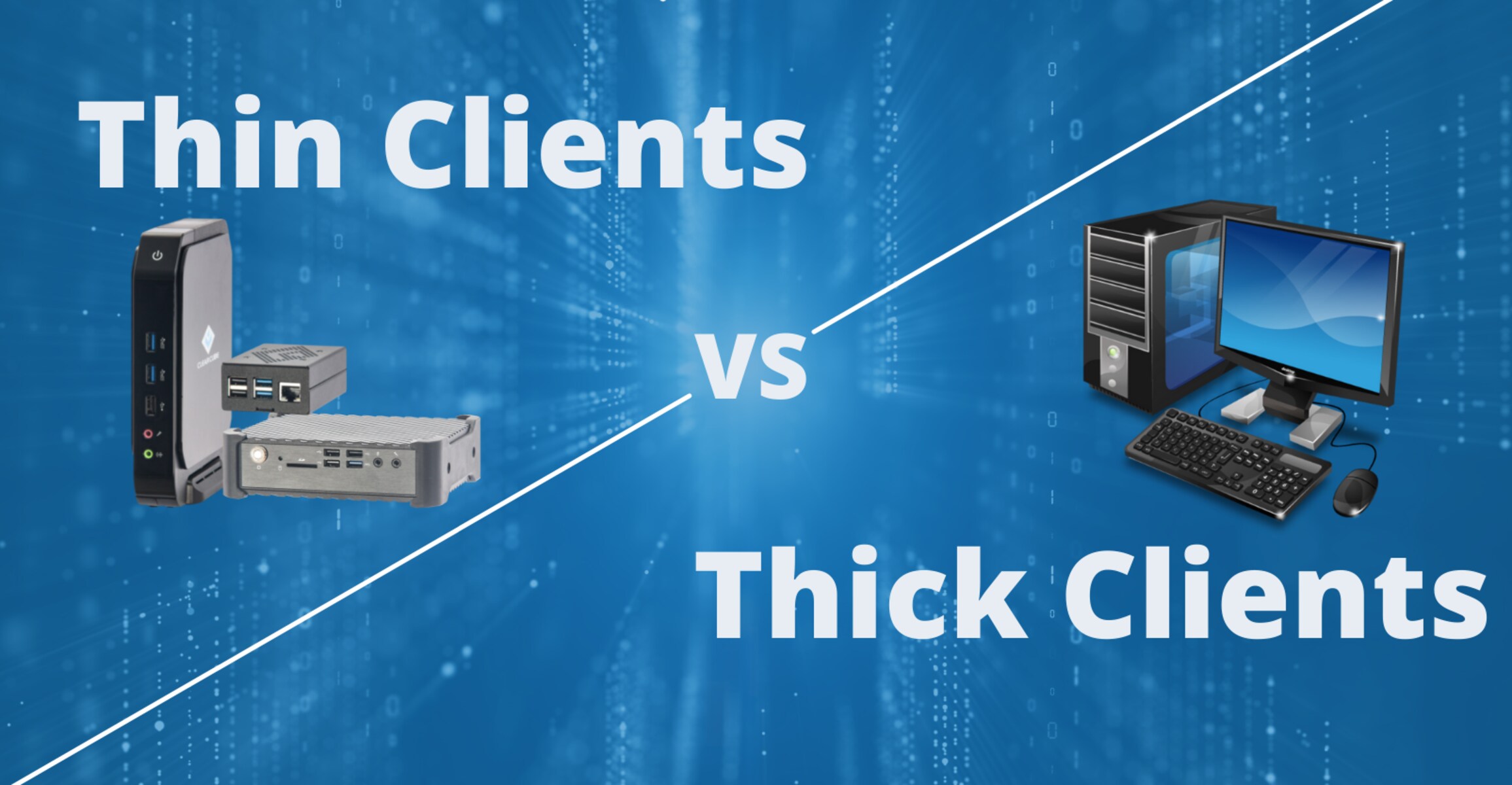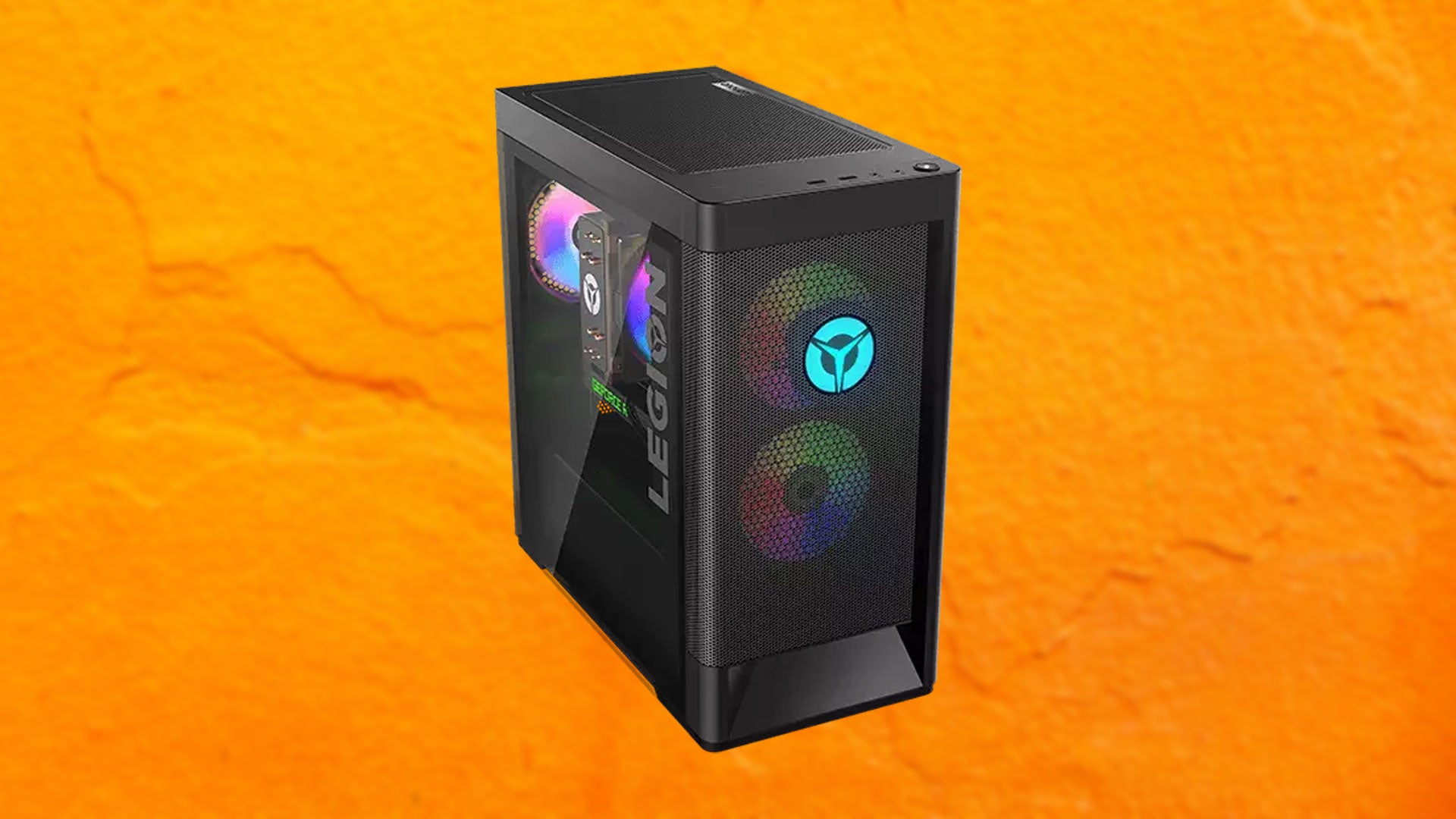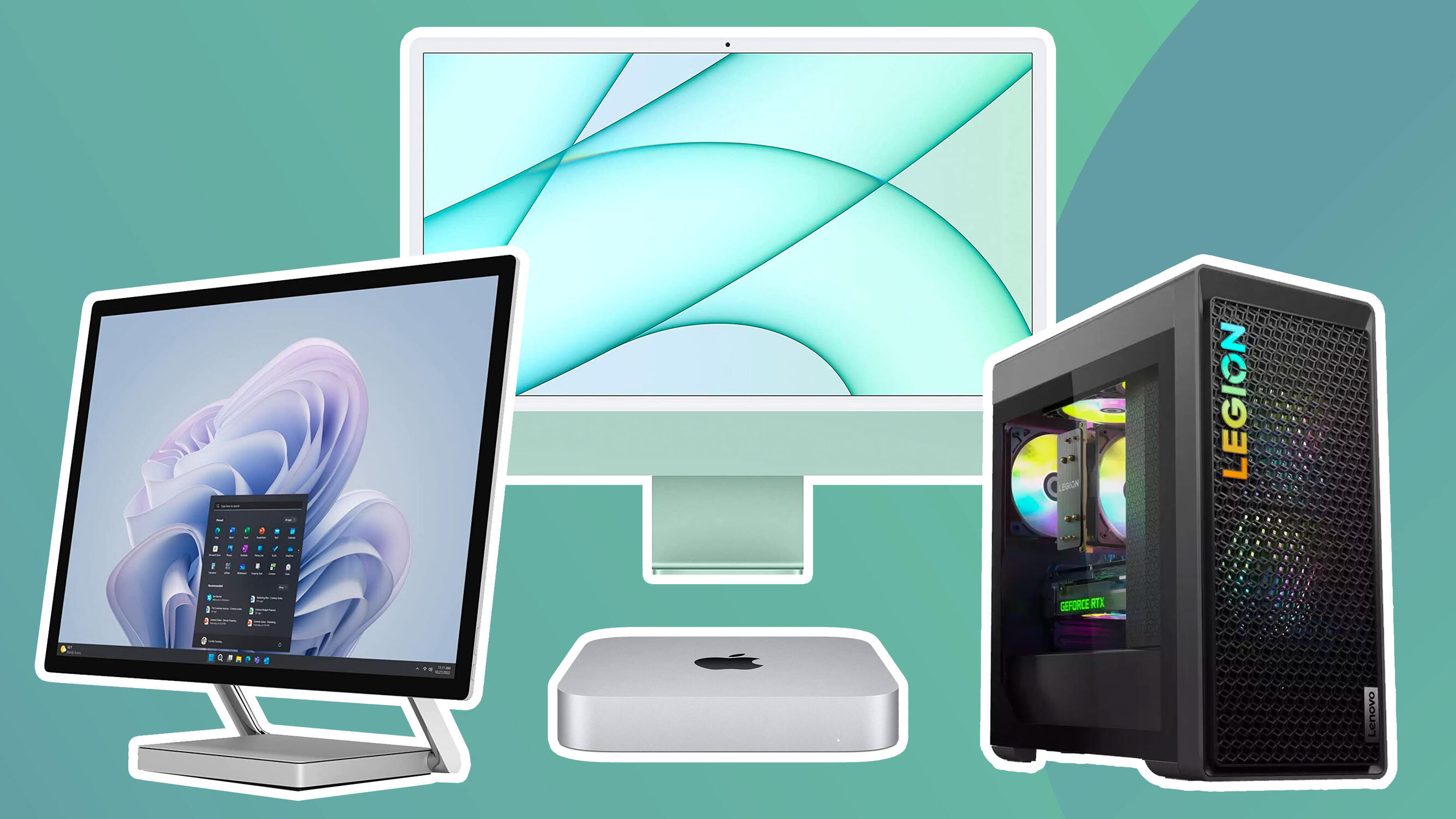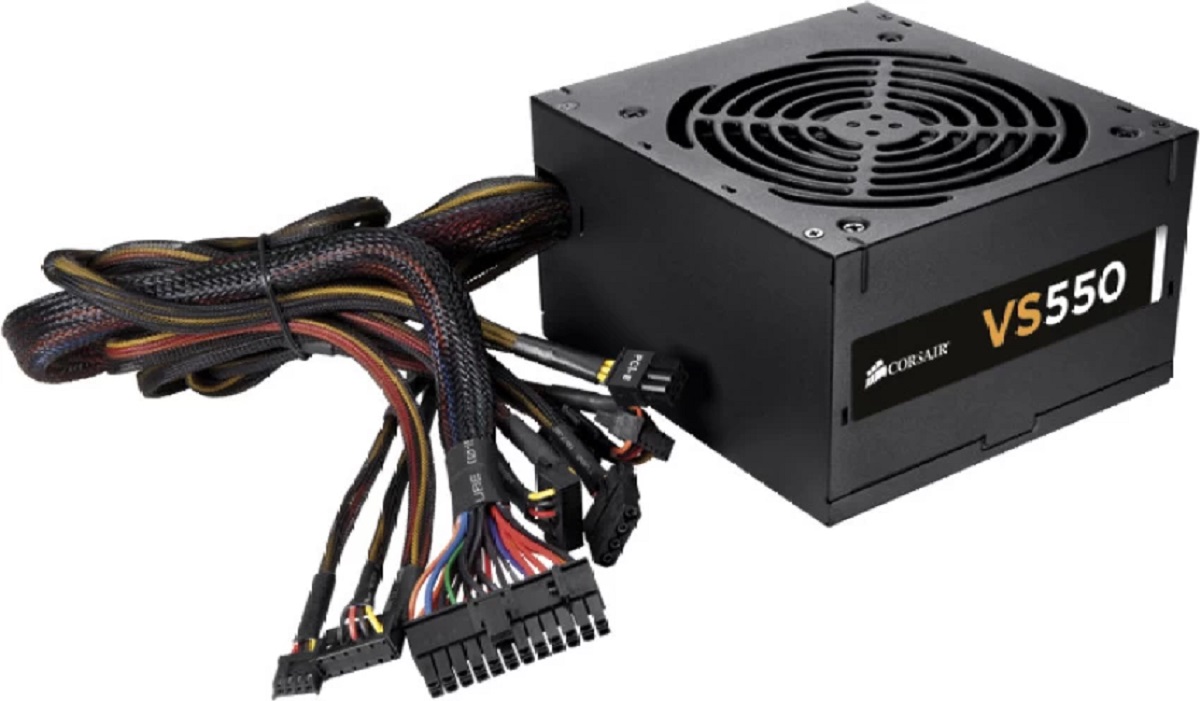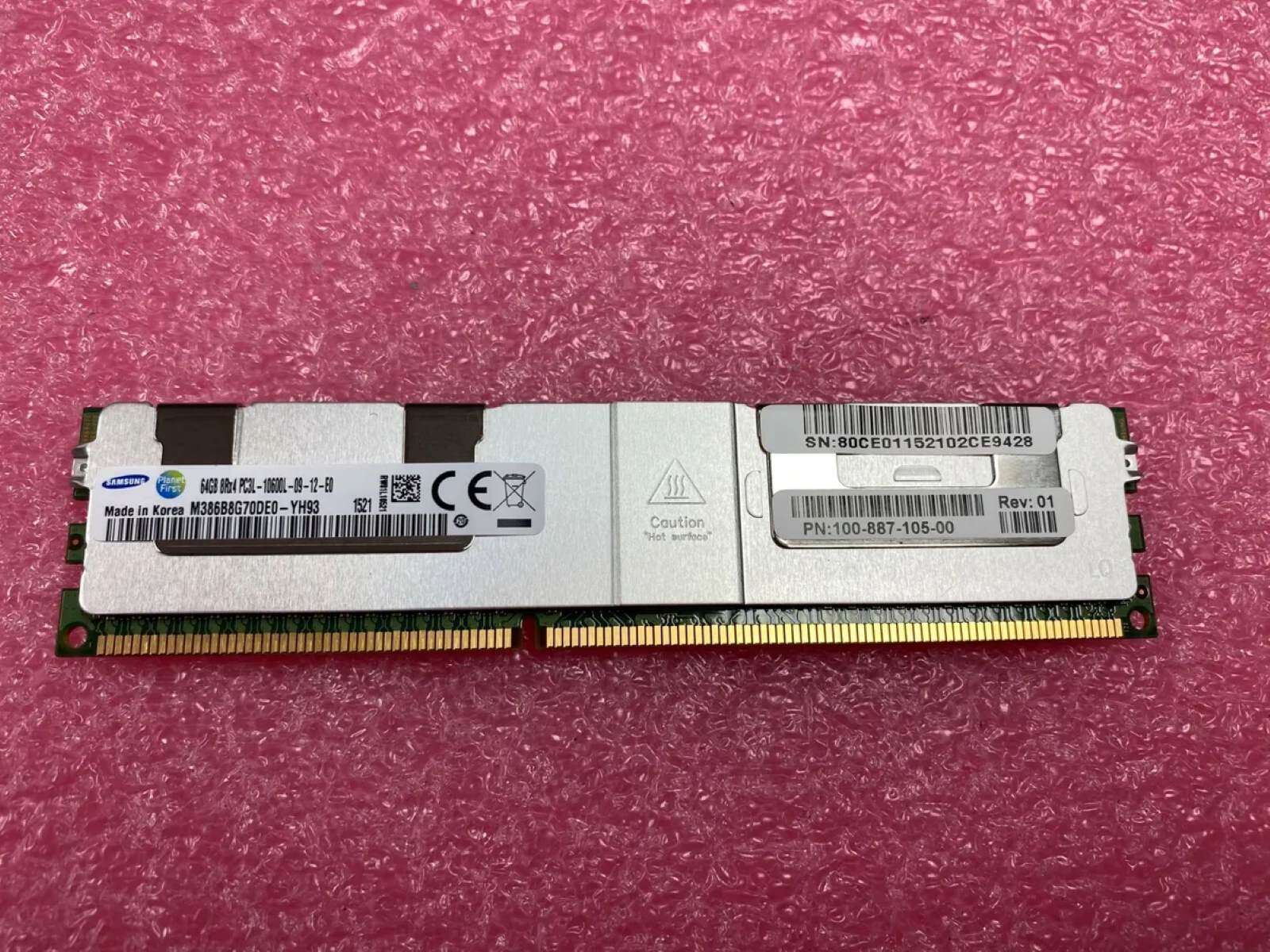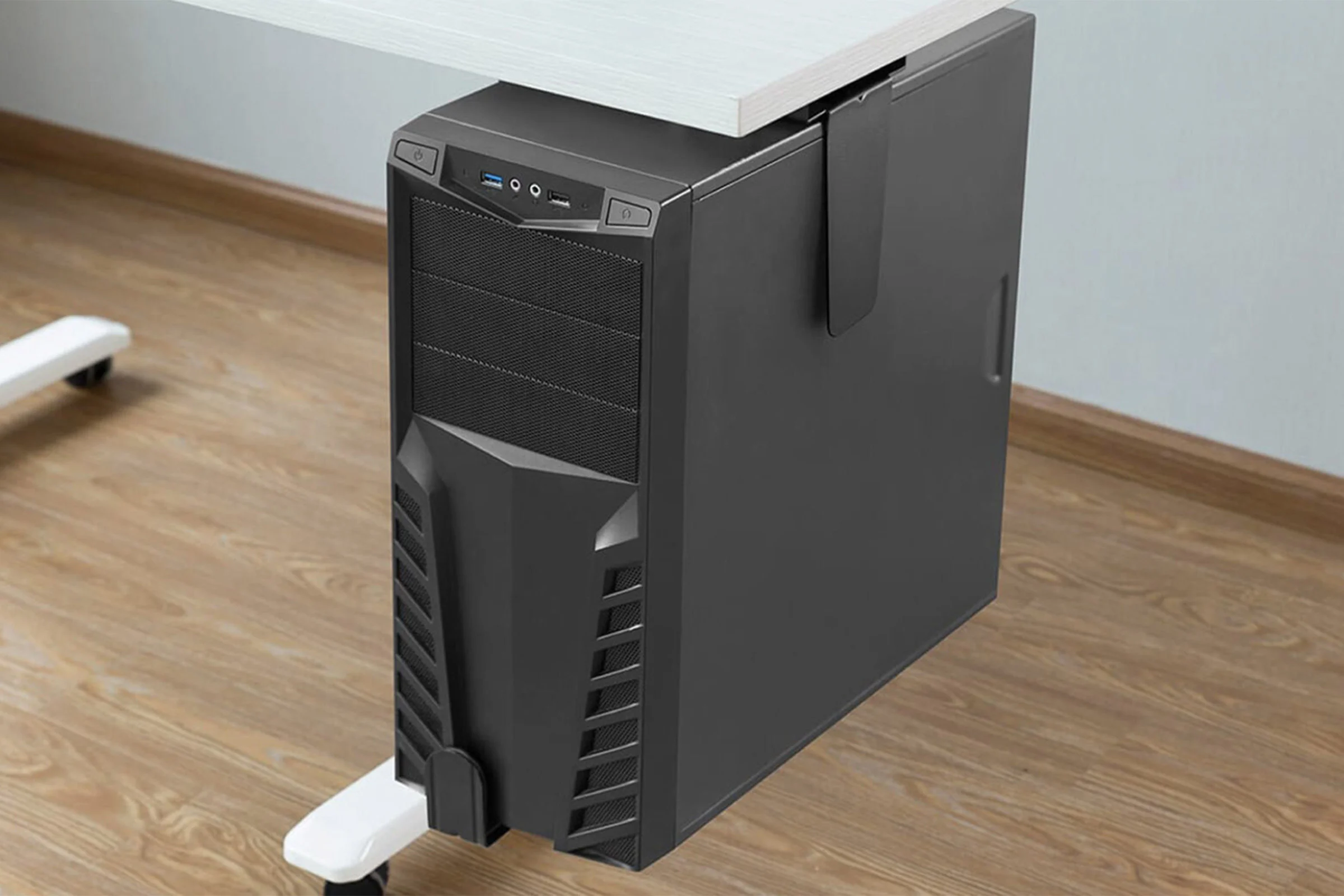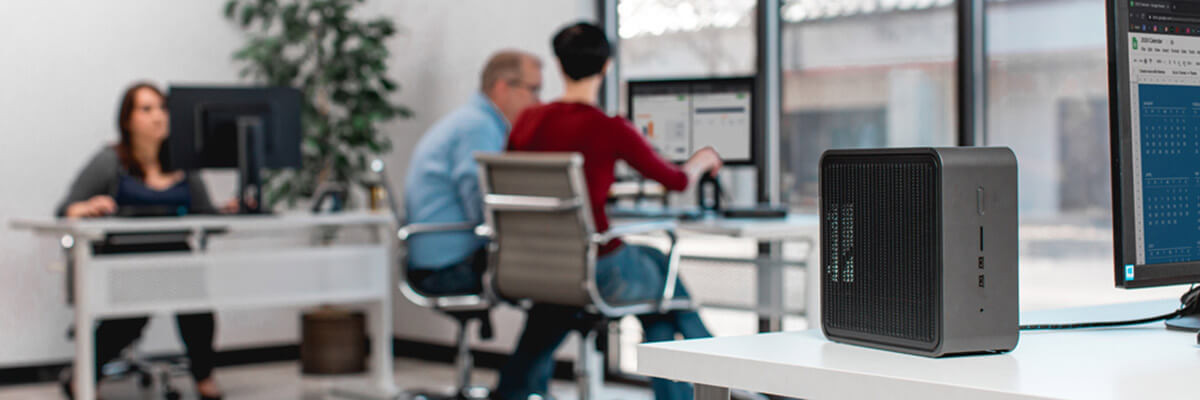Introduction
Welcome to the world of workstation PCs! In today’s rapidly evolving digital landscape, the demand for powerful and specialized computing systems is on the rise. When it comes to handling intensive tasks such as graphic design, video editing, animation, and scientific simulations, a regular desktop or laptop may not suffice. This is where workstation PCs come into the picture.
A workstation PC is a high-performance computer specifically designed to handle complex and resource-intensive tasks. Unlike standard consumer-grade computers, workstation PCs are equipped with cutting-edge hardware components that deliver unparalleled power, reliability, and precision. Whether you’re a professional designer, engineer, data scientist, or content creator, a workstation PC can significantly enhance your productivity and elevate your work to new heights.
At the core of a workstation PC lies a potent combination of powerful processors (CPUs), ample memory (RAM), advanced graphics processors (GPUs), high-speed storage solutions, as well as efficient cooling systems. These components work together harmoniously to tackle demanding workloads and provide seamless multi-tasking capabilities. Additionally, workstation PCs often come with enterprise-grade features such as error-correcting code (ECC) memory, enhanced security measures, and top-notch connectivity options.
Workstation PCs are not only known for their robust hardware configuration but also for their optimized software compatibility. They are typically certified to run professional-grade applications smoothly and efficiently. Whether you’re using CAD software, 3D modeling tools, simulation software, or data analysis suites, a workstation PC ensures that you’re utilizing the full potential of these applications without any limitations or bottlenecks.
So, if you often find yourself working with large datasets, complex simulations, or intricate designs that require a tremendous amount of computational power, a workstation PC is the ideal solution. With their unparalleled performance, stability, and longevity, these workhorses can help you unleash your creativity, streamline your workflows, and achieve exceptional results.
What is a Workstation PC?
A workstation PC is a specialized computer system designed to handle complex and resource-intensive tasks. It is specifically tailored for professionals in fields such as graphic design, video editing, engineering, scientific research, and data analysis. Workstation PCs are built with high-performance hardware components that can handle demanding workloads with ease.
One of the key features of a workstation PC is its powerful processor (CPU). These processors are designed to handle heavy computations and multi-threaded tasks, allowing professionals to work efficiently without any lag or delays. Additionally, workstation PCs are equipped with ample memory (RAM) to ensure smooth multitasking and the ability to handle large datasets and complex simulations.
Graphics processing is another crucial aspect of a workstation PC. It incorporates advanced graphics processors (GPUs) that are optimized for rendering and manipulating high-resolution images, 3D models, and animations. This makes workstation PCs ideal for tasks that require accurate visual representation, such as architectural rendering, CAD design, and virtual reality applications.
In terms of storage, workstation PCs often utilize high-speed solid-state drives (SSDs) or RAID configurations. This allows for quick data access and reduces loading times for large files and applications. The storage capacity of workstation PCs can be customized to suit specific requirements, ensuring that professionals have ample space for storing project files, media assets, and software libraries.
When it comes to connectivity, workstation PCs offer a wide range of options. They are equipped with multiple USB ports, HDMI or DisplayPort outputs, and sometimes Thunderbolt ports, allowing users to connect various peripherals, monitors, and external devices. This ensures seamless integration with high-resolution displays, input devices, audio equipment, and network resources.
Workstation PCs are also known for their robust and durable build quality. They are typically designed with efficient cooling systems to prevent overheating during long hours of use. Additionally, workstation PCs often come with enterprise-grade features such as error-correcting code (ECC) memory, redundant power supplies, and advanced security measures to protect sensitive data.
In summary, a workstation PC is a powerful and specialized computer system designed for professionals in demanding industries. It combines cutting-edge hardware components, optimized software compatibility, and enterprise-grade features to deliver unparalleled performance, reliability, and longevity. If you rely on resource-intensive applications and need a system that can handle complex tasks with ease, a workstation PC is the perfect tool to boost your productivity and unleash your creative potential.
Components of a Workstation PC
A workstation PC consists of several key components that work together to deliver the performance and capabilities required for demanding tasks. Let’s take a closer look at these essential components:
- Processor (CPU): The CPU is the brain of the workstation PC. It handles all the calculations and instructions necessary to perform tasks. Workstation PCs often feature high-core-count processors with advanced architectures and robust multithreading capabilities. This enables smooth multitasking and quick execution of complex operations.
- Memory (RAM): RAM plays a crucial role in a workstation PC by providing temporary storage for data that the CPU requires for processing. Workstation PCs are typically equipped with large quantities of RAM to handle memory-intensive applications and multitasking efficiently. The amount of RAM can be customized based on specific needs, ranging from 16GB to multiple terabytes.
- Graphics Card (GPU): Workstation PCs often leverage dedicated graphics cards that are optimized for professional applications. These GPUs offer powerful rendering capabilities, support for high resolutions, and specialized drivers for software compatibility. They are essential for tasks such as 3D modeling, video editing, and graphic design.
- Storage: Workstation PCs require ample storage to handle large project files, media assets, and software libraries. High-speed solid-state drives (SSDs) are commonly used for faster data access and shorter loading times. Some workstation PCs also incorporate multiple drives in a RAID configuration for added speed and data redundancy.
- Motherboard: The motherboard is the main circuit board that connects and integrates all components of a workstation PC. It provides the platform for communication between the CPU, RAM, storage devices, and other peripherals. High-quality motherboards are essential for stability and reliable performance.
- Power Supply Unit (PSU): Workstation PCs demand a robust and efficient power supply to meet the power requirements of high-performance components. A reliable PSU ensures stable voltage delivery and protects the components from power fluctuations. It is important to choose a PSU with adequate wattage and high efficiency to support all components.
- Cooling System: Workstation PCs generate a significant amount of heat due to the high-performance components and intensive workloads. Effective cooling systems such as CPU coolers, case fans, and liquid cooling solutions are crucial to maintain optimal temperatures, prevent overheating, and ensure long-term reliability.
- Connectivity: Workstation PCs typically offer a range of connectivity options to accommodate various peripherals and devices. This includes USB ports, Ethernet ports for wired networking, audio jacks, and video outputs such as HDMI, DisplayPort, or Thunderbolt. These connections enable seamless integration with monitors, input devices, external storage, and network resources.
- Operating System (OS): The choice of operating system is essential for a workstation PC. Professionals often opt for Windows, macOS, or Linux, depending on the specific software requirements and personal preferences. The operating system must be compatible with the professional applications being used to ensure smooth performance and stability.
In summary, the components of a workstation PC work in harmony to provide the power, speed, and reliability required for resource-intensive tasks. When building or purchasing a workstation PC, it’s important to consider the specific requirements of your work and choose components that can handle the demands of your profession.
Differences between Workstation PCs and Gaming PCs
While workstation PCs and gaming PCs may share some similarities in terms of high-performance hardware, they are designed for different purposes and cater to different needs. Here are the key differences between workstation PCs and gaming PCs:
- Purpose: The primary purpose of a workstation PC is to handle resource-intensive professional tasks such as graphic design, video editing, engineering simulations, and scientific calculations. On the other hand, gaming PCs are built specifically for gaming, prioritizing high frame rates, immersive visuals, and smooth gameplay experiences.
- Hardware Configuration: Workstation PCs typically emphasize CPU performance, memory capacity, and strong multi-threading capabilities to handle complex calculations and data processing. They often use professional-grade GPUs with optimized drivers for accuracy in tasks such as rendering and modeling. Gaming PCs, on the other hand, focus on high-frequency CPUs, abundant fast memory, and powerful gaming-oriented GPUs for delivering maximum frame rates and stunning graphics.
- Software Compatibility: Workstation PCs are certified to run professional software applications seamlessly. They often come with optimized drivers and are rigorously tested for compatibility with industry-standard software from companies such as Adobe, Autodesk, and Dassault Systems. Gaming PCs prioritize compatibility with gaming software and often come with features like RGB lighting control and customizable software interfaces for gaming-specific optimization.
- Storage Configuration: Workstation PCs typically require ample storage to handle large project files and datasets. They often use high-speed solid-state drives (SSDs) or RAID configurations for quick data access and reliability. Gaming PCs also utilize SSDs for faster game loading times but may focus more on larger capacity hard disk drives (HDDs) to accommodate a larger game library.
- Form Factor: Workstation PCs are often built with expandability in mind, allowing for the addition of extra components such as storage drives, graphics cards, and networking options. They are generally available in larger tower cases to provide adequate airflow for cooling. Gaming PCs also come in various sizes but often prioritize compact designs and aesthetics, emphasizing RGB lighting and unique cases.
- Connectivity Options: Workstation PCs focus on providing a wide range of connectivity options to accommodate peripherals such as displays, input devices, and external storage systems. They typically include multiple USB ports, Ethernet ports, and audio jacks. Gaming PCs often prioritize peripheral connections such as USB ports for gaming accessories, audio outputs for gaming headsets, and dedicated networking ports for online gaming.
Overall, the key differences between workstation PCs and gaming PCs lie in their intended purpose, hardware configuration, software compatibility, storage options, form factor, and connectivity. Choosing the right type of PC depends on whether you need a system tailored for professional applications or one optimized for gaming experiences.
Benefits of Using a Workstation PC
Utilizing a workstation PC offers a multitude of benefits for professionals working in demanding industries. From increased productivity to improved reliability, here are some key advantages of using a workstation PC:
- Unparalleled Performance: Workstation PCs are designed with powerful processors, ample memory, and robust graphics cards to deliver exceptional performance. Whether you’re running complex simulations, rendering high-resolution images, or analyzing vast datasets, a workstation PC can handle the most demanding tasks with ease.
- Enhanced Efficiency: With impressive processing power and multitasking capabilities, workstation PCs enable professionals to work more efficiently. Complex tasks that may take hours or even days to complete on a standard computer can be accomplished in a fraction of the time, allowing for faster turnarounds and increased productivity.
- Optimized Software Compatibility: Workstation PCs are certified to run professional-grade software seamlessly. They are rigorously tested with industry-standard applications, ensuring that you can utilize the full potential of software tools without compatibility issues. This translates to smoother workflows and a streamlined creative process.
- Accurate Visualization: Workstation PCs are equipped with advanced graphics processors that provide accurate and detailed visual representation. Whether you’re designing intricate 3D models, creating lifelike animations, or working on architectural renderings, a workstation PC ensures that you can visualize your projects with precision and clarity.
- Reliability and Longevity: Workstation PCs are built with high-quality components and undergo extensive testing to ensure long-term reliability. They are designed to handle intensive workloads for extended periods without overheating or performance degradation. This reliability translates into less downtime and a longer lifespan for your workstation PC.
- Improved Data Security: Many workstation PCs come with enhanced security features such as built-in encryption, authentication mechanisms, and secure storage options. This safeguards sensitive information and protects valuable intellectual property, giving you peace of mind when working with confidential or proprietary data.
- Expandability and Customizability: Workstation PCs are often designed to be easily expandable, allowing professionals to upgrade components as their needs evolve. Whether you need to add extra storage, increase memory capacity, or upgrade to the latest processors, a workstation PC offers the flexibility to customize your system to suit your specific requirements.
- Dedicated Technical Support: Manufacturers of workstation PCs typically offer dedicated technical support for their professional-grade products. This ensures that you receive assistance and troubleshooting guidance from experts who understand the unique requirements of your workstation PC, minimizing downtime and maximizing productivity.
In summary, using a workstation PC provides professionals with unmatched performance, enhanced efficiency, optimized software compatibility, accurate visualization capabilities, and increased reliability. With additional benefits such as improved data security, expandability, and dedicated technical support, a workstation PC is an indispensable tool for those working in demanding industries.
Common Applications of Workstation PCs
Workstation PCs find extensive use in a wide range of industries and professions where complex and resource-intensive tasks are the norm. Let’s explore some of the common applications where workstation PCs excel:
- Graphic Design and Digital Art: Workstation PCs are indispensable tools for graphic designers and digital artists. They offer the processing power and accurate color representation needed for creating stunning visuals, editing high-resolution images, and designing intricate artwork.
- Video Editing and Post-Production: The demanding nature of video editing requires advanced hardware and capabilities that workstation PCs provide. They can handle real-time playback of high-resolution footage, multi-camera editing, and the rendering of complex visual effects.
- Architectural Design and CAD: Workstation PCs are ideal for professionals in the architecture and engineering industries. They offer the computational power required for complex 3D modeling, rendering photorealistic architectural designs, and simulating structural physics.
- Animation and Visual Effects: Workstation PCs are crucial for animators and visual effects artists working in film, television, and gaming. They enable the creation of seamless animations, detailed character models, and realistic visual effects that captivate audiences.
- Data Analysis and Scientific Research: Workstation PCs excel in handling large-scale data analysis and scientific simulations. They provide the computational speed and memory capacity needed for complex statistical calculations, molecular modeling, climate simulations, and other scientific research tasks.
- Virtual Reality and Augmented Reality Development: Workstation PCs play a crucial role in developing immersive virtual reality (VR) and augmented reality (AR) experiences. They deliver the graphics processing power required for creating realistic environments and interactive virtual elements.
- Engineering Simulations: Workstation PCs are essential for engineers conducting simulations and calculations for structural analysis, fluid dynamics, and electromagnetics. They enable engineers to accurately model and analyze complex systems, leading to better designs and optimized performance.
- Medical Imaging and Research: Workstation PCs are widely used in the medical field for handling medical imaging data, such as CT scans, MRI scans, and 3D reconstructions. They provide the processing power required to visualize and analyze medical images with precision.
- Financial Modeling and Analysis: For professionals in finance and banking, workstation PCs are indispensable for complex financial modeling and analysis. They help in handling large datasets, performing detailed calculations, and running simulation models for risk assessment and investment analysis.
- Scientific Visualization: Workstation PCs allow scientists and researchers to visually represent complex scientific concepts and data. From displaying complex molecular structures to visualizing astronomical phenomena, workstation PCs provide the computational power necessary for accurate and detailed scientific visualization.
In summary, workstation PCs are widely used in various industries and professions that require intensive computational power and specialized hardware. From graphic design and video editing to architectural design, scientific research, and financial analysis, these powerful systems enable professionals to achieve exceptional results in their respective fields.
Factors to Consider When Choosing a Workstation PC
Choosing the right workstation PC is a crucial decision that can greatly impact your productivity and the quality of your work. To ensure you select the best system for your needs, there are several key factors to consider:
- Performance Requirements: Assess the specific tasks and applications you will be working on and determine the necessary level of performance. Consider factors such as processor speed, memory capacity, and graphics processing power to ensure your workstation PC can handle the demands of your work.
- Software Compatibility: Ensure that the workstation PC you choose is compatible with the software applications you rely on for your work. Check the system requirements and certifications for running professional-grade software in your industry to avoid any compatibility issues.
- Storage Capacity and Speed: Consider the amount of storage you require for your files and projects. Decide between solid-state drives (SSDs) for fast access times or hard disk drives (HDDs) for larger capacity. Additionally, consider using a combination of both or utilizing a RAID configuration for enhanced speed and data redundancy.
- Graphics Capabilities: If your work involves graphic design, video editing, or 3D modeling, pay special attention to the graphics card (GPU) in the workstation PC. Look for a GPU with sufficient memory, high rendering capabilities, and optimized drivers for the specific software you use.
- Expandability and Future-Proofing: Consider the potential for future upgrades or expansion. Look for a workstation PC with available PCIe slots, extra drive bays, and adequate power supply to accommodate future additions such as more RAM, additional storage, or upgraded graphics cards.
- Budget: Determine your budget for a workstation PC and prioritize your needs accordingly. While it’s important to invest in quality components, try to find a balance between performance and cost-effectiveness to ensure you get the most value for your money.
- Form Factor and Workspace: Consider the physical space available for your workstation PC. Choose a form factor, such as a tower or compact design, that best fits your workspace and provides adequate airflow for cooling. Also, consider factors such as noise levels and cable management when selecting a form factor.
- Manufacturer and Technical Support: Research the reputation and customer satisfaction of the manufacturer when selecting a workstation PC. Look for companies with reliable customer support and warranties to ensure timely assistance and resolution if any issues arise.
- Connectivity and Ports: Assess the connectivity options and ports available on the workstation PC. Consider the number and types of USB ports, video outputs (such as HDMI or DisplayPort), and audio jacks to ensure they meet your requirements for connecting peripherals and external devices.
- Energy Efficiency: In addition to performance, consider the energy efficiency of the workstation PC. Look for components and systems that have high efficiency ratings, such as power supplies with 80 Plus certifications, to minimize energy consumption and reduce operating costs in the long run.
By carefully considering these factors, you can make an informed decision when choosing a workstation PC that aligns with your specific needs, professional requirements, and budget constraints.
Workstation PC Buying Guide
Investing in the right workstation PC is essential for professionals who rely on high-performance computing to excel in their work. To ensure you make an informed decision, consider the following factors when purchasing a workstation PC:
- Define Your Requirements: Assess your specific needs and the tasks you will be performing on the workstation PC. Determine the required level of performance, storage capacity, and graphics capabilities to accommodate your professional workflows.
- Consider the Workstation Class: Choose between entry-level, mid-range, and high-end workstation PCs based on your budget and workload requirements. Higher-end workstation PCs offer more powerful hardware components and advanced features, but they come at a higher price point.
- Hardware Components: Pay close attention to the key hardware components like the processor (CPU), memory (RAM), graphics card (GPU), and storage drives. Research the latest technology and compare specifications to ensure they meet your performance needs.
- Software Compatibility: Ensure that the workstation PC is certified to run the software applications you rely on. Check vendor recommendations for optimal compatibility and performance to ensure a seamless integration with your professional software suite.
- Expandability and Future-Proofing: Consider the potential for future upgrades and expansion. Look for a workstation PC with sufficient expansion slots, drive bays, and power supply to accommodate additional RAM, storage, or other hardware components.
- Manufacturer and Warranty: Research the reputation and customer support of the manufacturer. Opt for a reliable and reputable brand that offers warranties and accessible technical support to ensure a smooth ownership experience.
- Budget Considerations: Determine your budget for a workstation PC and strike a balance between performance and cost-effectiveness. Prioritize the components that have the most impact on your work while managing your budget constraints.
- Ergonomics and Workstation Setup: Consider the physical ergonomics of the workstation PC, including the form factor and connectivity options. Ensure that the PC fits well within your workspace and provides convenient access to necessary peripherals and ports.
- Read Reviews and Seek Recommendations: Look for reviews and seek recommendations from professionals in your industry. Learn from their experiences with different workstation PC models to gain valuable insights and make an informed decision.
- Future Support and Upgrades: Anticipate the need for future support and upgrades. Choose a workstation PC that allows for easy maintenance, access to spare parts, and potential upgrades to prolong its lifespan and keep up with evolving technology.
By following this buying guide, you can narrow down your options and select the perfect workstation PC that meets your performance requirements, delivers optimal software compatibility, fits within your budget, and ensures long-term reliability for your professional work.
Conclusion
Workstation PCs are invaluable tools for professionals in fields that demand high-performance computing power. Whether you’re a graphic designer, video editor, engineer, scientist, or any other professional needing to tackle resource-intensive tasks, a well-chosen workstation PC can significantly enhance your productivity and deliver outstanding results.
When choosing a workstation PC, it’s important to consider various factors such as performance requirements, software compatibility, storage options, expandability, and budget considerations. By carefully assessing your specific needs and comparing the features and capabilities of different models, you can find the ideal workstation PC that meets your unique requirements and helps you thrive in your professional endeavors.
Remember to prioritize components like the processor, memory, graphics card, and storage to ensure optimum performance for your work. Consider the reputation and customer support of the manufacturer to ensure a reliable and satisfying experience. Additionally, take into account future expansion and upgrade possibilities to future-proof your investment.
By investing in a workstation PC, you gain access to unparalleled performance, optimized software compatibility, and enhanced efficiency. These computers are built to handle the demanding tasks of industries such as graphic design, video editing, engineering, scientific research, and more. With the right workstation PC, you can tackle complex projects, visualize intricate designs, and process large amounts of data with ease.
Make use of this buying guide as a roadmap to assist you in finding the perfect workstation PC that aligns with your specific needs and budget. By making an informed decision, you can ensure that your workstation PC becomes an invaluable tool that empowers you to excel in your professional endeavors.







